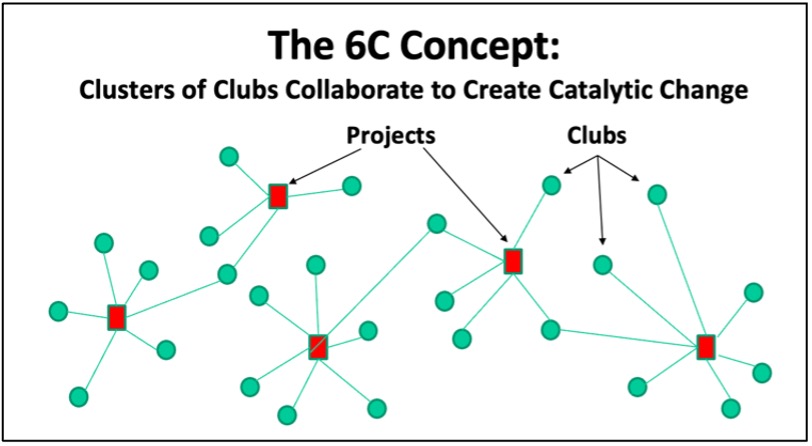
Everybody wants a better world, don’t they? But who knows how to get one? We think we know, and we’re not talking metaphorically, or rhetorically. We’re talking literally.
Our conviction comes from 15 years of experience helping close to two million of the poorest people in the world have a better chance in life. The idea has three elements: small donations; collective action; and high impact projects. Those elements create three corresponding strands of culture: compassion; collaboration; and competence. Combined, they are what makes the change. Architecturally, it looks like this.
On the left are donors. On the right are the villages where we build our projects. In the middle is TGUP. Since 2007, we’ve invested more than $1 million to fund more than 270 projects in 22 developing world countries. By all measures, it works, and well.

We started as One Dollar For Life, asking teenagers to donate $1 so we could build classrooms in developing countries. We built more than 100! When COVID closed the schools in 2020, we opened to adults and changed our name to The Global Uplift Project. But the idea is the same: everybody gives just a little bit—“pocket change”—and we use all of that money to help the poorest people in the world help themselves. Some specifics…
Small donations —even as small as $1—mean that everybody can participate. The single biggest change we can make toward a better world is to show millions of people that we’re bigger when we help others. Because we are, aren’t we? What we’re really working to create, here, is a culture of compassion, where it’s OK to help others. In fact, it’s easy, and fun! With that in place, positive change becomes almost inevitable.
The second element in the model is collective action. In addition to individuals, we work with schools and service clubs—Rotary and Kiwanis Clubs—to help their members realize the same nobility in altruism that an individual feels. It’s just that it happens to many people, as a shared experience. It’s magnified. That looks like this model:

Here, we’re creating a culture of collaboration, because we’re stronger when we work together. Aren’t we? And Uplifting the human condition is too big for any one of us to do alone. We need collaboration.
Finally, there are high impact projects. We build small-scale, low-cost projects that have almost no overhead, yet, dramatically improve life chances for the recipients. Classrooms; medical clinics; libraries; water wells; latrines, etc. They change the dynamic of any village, helping boost thousands of people at a time.
We especially target projects in education because a better educated person remains better educated their entire life. They pass that along to their children, who pass it along to theirs. The effect literally ripples into eternity, amplifying itself as it goes. High impact projects add the cultural component of competence.

This, then, is the matured TGUP model: small donations, collective action, and high-impact projects creating a culture of compassion, collaboration, and competence. Does it work?
Besides Save a Girl, we have only really marketed in northern California. Yet, we’ve completed 270+ projects that, over their lives, will help almost two million of the poorest people in the world have just a slightly better chance in life. It is SO working! Imagine, then, when we’re doing 10X, or 100X more. The better world we’re all longing for suddenly appears within reach. It is.

This works because it is simple, it’s rewarding to all who touch it, it’s transparent, it’s effective, and it leaves its imprint in the culture, hopefully to spawn a new ethic: that we’re bigger when we help others, and we’re stronger when we work together.
Our challenge, then, is to scale it up. That is our invitation to you, to help. We need people like you, people with compassion, vision, and the capacity to act. Together, we really can change the world. We are. That’s why we’re confident that we will. Join us.
